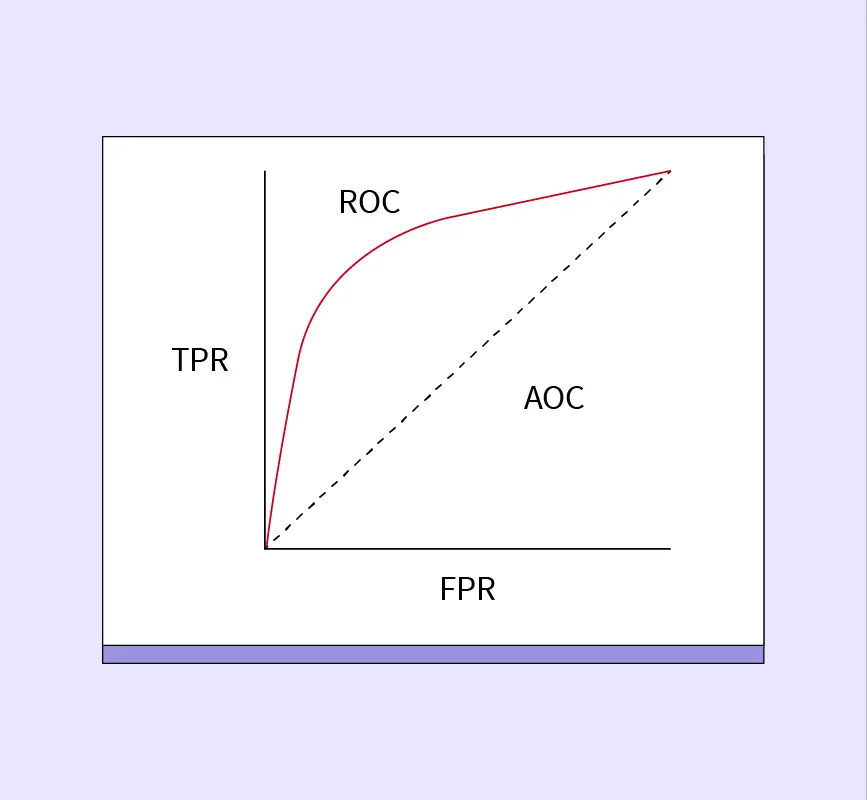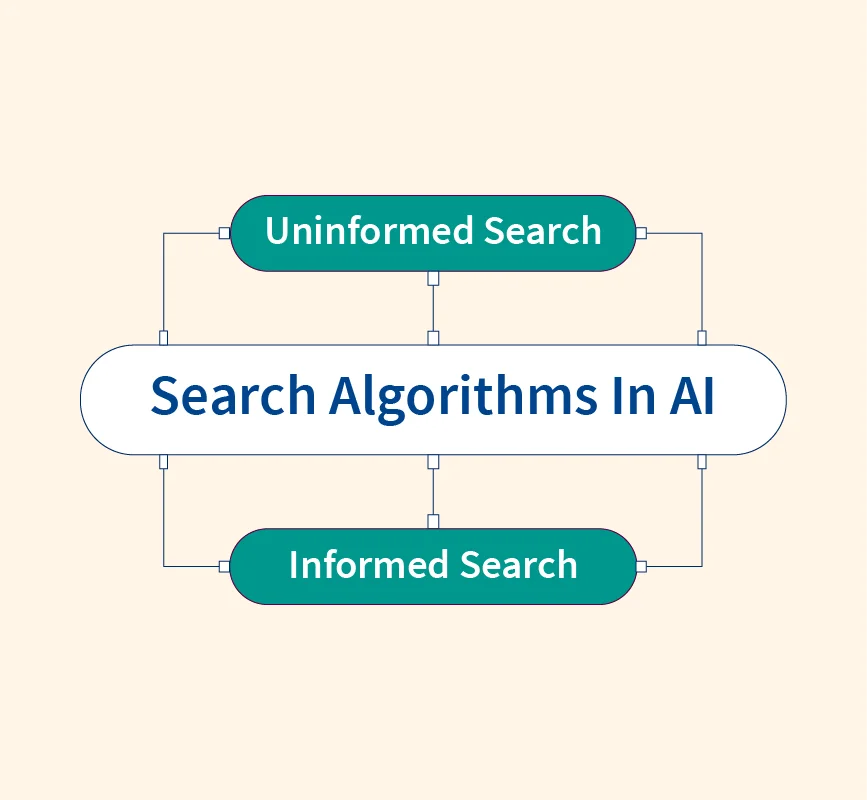Evaluating machine learning models, especially for classification tasks, goes beyond measuring just accuracy. In real-world scenarios—such as fraud detection, medical diagnosis, or spam filtering—datasets are often imbalanced, making accuracy an unreliable metric.
This is where the AUC-ROC Curve becomes essential. It provides a comprehensive view of a model’s ability to distinguish between classes across various threshold settings.
Whether you’re working on binary classification or adapting models for multi-class problems, AUC-ROC helps assess true positive vs. false positive trade-offs, offering clearer insight into classifier performance and guiding better decision-making.
What is the ROC Curve?
The ROC Curve, or Receiver Operating Characteristic Curve, is a graphical representation used to evaluate the performance of binary classification models. It illustrates how a model’s predictions change across different classification thresholds, helping assess its ability to distinguish between positive and negative classes.
The ROC curve plots the True Positive Rate (TPR) on the Y-axis against the False Positive Rate (FPR) on the X-axis.
- TPR (Sensitivity or Recall) = TP / (TP + FN)
- FPR = FP / (FP + TN)
As the threshold for classifying predictions shifts from 0 to 1, the TPR and FPR are recalculated, and the resulting pairs of values are plotted to form the ROC curve.
A curve that rises quickly toward the top-left corner indicates that the model performs well—capturing most of the true positives while keeping false positives low. A model with no discriminative ability (random guessing) produces a diagonal line from (0,0) to (1,1).
The ROC curve is especially useful when the costs of false positives and false negatives differ, or when evaluating models on imbalanced datasets.
What is AUC (Area Under the Curve)?
AUC, or Area Under the Curve, refers to the area under the ROC curve. It provides a single scalar value that summarizes the overall performance of a classification model across all possible thresholds.
Mathematically, AUC represents the probability that a classifier will rank a randomly chosen positive instance higher than a randomly chosen negative instance. The value of AUC ranges from 0 to 1, making it easy to interpret and compare different models.
Here’s how to interpret AUC scores:
- AUC = 1.0 → Perfect classifier. The model distinguishes perfectly between positive and negative classes.
- AUC = 0.9–0.99 → Excellent performance.
- AUC = 0.8–0.89 → Good performance.\
- AUC = 0.7–0.79 → Fair performance.
- AUC = 0.6–0.69 → Poor performance.
- AUC = 0.5 → No discriminative power; equivalent to random guessing.
- AUC < 0.5 → Worse than random; predictions may be inverted.
AUC is widely preferred in model evaluation because it is threshold-independent and remains robust even when class distributions are imbalanced, making it ideal for practical machine learning applications.
Key Metrics Behind AUC-ROC
To understand the ROC curve and AUC score deeply, it’s essential to know the four core evaluation metrics derived from the confusion matrix.
Confusion Matrix
| Predicted Positive | Predicted Negative | |
| Actual Positive | True Positive (TP) | False Negative (FN) |
| Actual Negative | False Positive (FP) | True Negative (TN) |
1. True Positive Rate (Sensitivity or Recall)
$$\text{TPR} = \frac{TP}{TP + FN}$$
Also called Recall, this measures how well the model identifies actual positives. A high TPR means the model is good at catching most of the positive cases (e.g., identifying fraudulent transactions or diseases correctly).
2. False Positive Rate
$$\text{FPR} = \frac{FP}{FP + TN}$$
This metric indicates how many actual negatives are incorrectly predicted as positives. A lower FPR is preferred, especially in scenarios where false alarms (e.g., spam detection, cancer screening) can be costly or disruptive.
3. True Negative Rate (Specificity)
$$\text{TNR} = \frac{TN}{TN + FP}$$
Also known as Specificity, this measures the proportion of actual negatives correctly identified by the model. It’s particularly useful in evaluating models where false positives carry serious implications, such as legal or financial decisions.
4. False Negative Rate
$$\text{FNR} = \frac{FN}{FN + TP}$$
The False Negative Rate indicates the percentage of positives that are missed by the model. In healthcare or fraud detection, a high FNR could mean undetected diseases or overlooked fraudulent activity. Reducing FNR is crucial in applications where missing a positive instance is riskier than flagging a false one.
How Does the AUC-ROC Curve Work?
The AUC-ROC curve visualizes how a classification model performs across different thresholds for converting predicted probabilities into class labels. Most classifiers output a probability score for each class, and the threshold determines the point at which a prediction is classified as positive or negative (e.g., 0.5 by default).
By varying this threshold from 0 to 1, you observe how the True Positive Rate (TPR) and False Positive Rate (FPR) change. Plotting TPR vs. FPR at each threshold forms the ROC curve, allowing you to evaluate the sensitivity-specificity trade-off. A model with a higher TPR and lower FPR will curve closer to the top-left, indicating better performance.
Unlike accuracy, which is calculated at a fixed threshold and can be misleading on imbalanced datasets, AUC-ROC provides a threshold-independent evaluation. For instance, in cancer detection, where false negatives are riskier than false positives, AUC-ROC gives a more nuanced view of model performance.
When to Use AUC-ROC for Model Evaluation?
AUC-ROC is particularly valuable for binary classification problems, especially when dealing with imbalanced datasets. In such cases, traditional metrics like accuracy can be misleading. For example, in fraud detection, where fraudulent cases are rare, a model that predicts everything as “non-fraud” may appear accurate but is functionally useless. AUC-ROC helps expose this imbalance by focusing on how well the model distinguishes between classes across all thresholds.
It’s also useful for comparing classifiers. A model with a higher AUC is generally better at distinguishing between positive and negative classes. AUC provides a single, interpretable score for ranking models without relying on any fixed threshold.
However, AUC-ROC is not suitable for regression tasks or ordinal classification problems, where prediction involves ordered categories or continuous outputs. Additionally, it may not be ideal in real-time systems where predictive probability calibration is more important than classification ranking.
Implementing AUC-ROC Curve in Python (Binary Classification)
The AUC-ROC curve is easy to implement in Python using libraries like scikit-learn and matplotlib. Below is a step-by-step guide for visualizing and comparing two classification models.
Step 1: Install and Import Libraries
Make sure you have the following libraries installed:
pip install scikit-learn matplotlibImport the necessary modules:
import matplotlib.pyplot as plt
from sklearn.datasets import make_classification
from sklearn.model_selection import train_test_split
from sklearn.linear_model import LogisticRegression
from sklearn.ensemble import RandomForestClassifier
from sklearn.metrics import roc_curve, roc_auc_scoreStep 2: Generate or Load Data
We’ll use a synthetic dataset for binary classification:
X, y = make_classification(n_samples=1000, n_classes=2, weights=[0.7, 0.3], random_state=42)
X_train, X_test, y_train, y_test = train_test_split(X, y, test_size=0.3, random_state=42)Step 3: Train Two Different Models
Train a Logistic Regression model and a Random Forest classifier:
lr_model = LogisticRegression()
rf_model = RandomForestClassifier()
lr_model.fit(X_train, y_train)
rf_model.fit(X_train, y_train)These models will be evaluated using their probability scores, which are required for plotting the ROC curve.
Step 4: Make Predictions and Calculate Probabilities
Obtain predicted probabilities for the positive class (label = 1):
lr_probs = lr_model.predict_proba(X_test)[:, 1]
rf_probs = rf_model.predict_proba(X_test)[:, 1]Step 5: Plot ROC Curve for Both Models
fpr_lr, tpr_lr, _ = roc_curve(y_test, lr_probs)
fpr_rf, tpr_rf, _ = roc_curve(y_test, rf_probs)
auc_lr = roc_auc_score(y_test, lr_probs)
auc_rf = roc_auc_score(y_test, rf_probs)
plt.figure(figsize=(8, 6))
plt.plot(fpr_lr, tpr_lr, label=f'Logistic Regression (AUC = {auc_lr:.2f})')
plt.plot(fpr_rf, tpr_rf, label=f'Random Forest (AUC = {auc_rf:.2f})')
plt.plot([0, 1], [0, 1], 'k--')
plt.xlabel('False Positive Rate')
plt.ylabel('True Positive Rate')
plt.title('ROC Curve Comparison')
plt.legend()
plt.grid(True)
plt.show()This plot helps compare model performance visually and numerically.
AUC-ROC for Multi-Class Classification
While AUC-ROC is commonly used for binary classification, it can also be extended to multi-class classification problems using the One-vs-All (OvA) strategy and appropriate averaging techniques.
One-vs-All Approach
In multi-class classification, the One-vs-All (OvA) method creates an individual binary classifier for each class by treating it as the “positive” class and grouping all other classes as “negative.”
This results in one ROC curve per class, allowing you to evaluate how well the model distinguishes that class from the rest.
For instance, in a 3-class problem (A, B, C), you will get:
- ROC A vs. (B + C)
- ROC B vs. (A + C)
- ROC C vs. (A + B)
This approach provides deeper insight into per-class performance.
Calculating AUC for Each Class
Once ROC curves are generated for each class, AUC scores can be calculated per curve. To summarize performance across all classes, use averaging techniques:
- Micro Average: Aggregates contributions from all classes, useful when class imbalance exists.
- Macro Average: Calculates AUC independently for each class, then takes the average (equal weight to each class).
- Weighted Average: Similar to macro but weights each class based on its support (number of true instances).
Choosing the right average depends on your evaluation goal—whether you care more about class balance or overall prediction consistency.
Python Implementation for Multi-Class ROC Curve
from sklearn.metrics import roc_auc_score
from sklearn.preprocessing import label_binarize
from sklearn.linear_model import LogisticRegression
# Binarize target labels
y_bin = label_binarize(y, classes=[0, 1, 2]) # for 3 classes
clf = LogisticRegression().fit(X_train, y_bin)
# Predict probabilities and calculate AUC
y_score = clf.predict_proba(X_test)
auc_macro = roc_auc_score(y_test, y_score, multi_class='ovr', average='macro')
auc_weighted = roc_auc_score(y_test, y_score, multi_class='ovr', average='weighted')This allows you to evaluate multi-class models with ROC-AUC as rigorously as binary ones.
Here’s the visual representation of AUC-ROC curves:
- Green: High AUC (≈ 0.95) — excellent model.
- Orange: Moderate AUC (≈ 0.75) — fair model.
- Gray dashed: AUC = 0.5 — random guessing.
Conclusion
The AUC-ROC curve is a vital tool for evaluating classification models, especially in situations involving imbalanced datasets or cost-sensitive decisions. It offers a comprehensive view of a model’s ability to distinguish between classes across all thresholds, making it superior to single-threshold metrics like accuracy.
However, while a high AUC generally indicates good model performance, it’s important to consider the problem context—including class distribution, business impact, and acceptable trade-offs between false positives and false negatives—before drawing conclusions.
When used wisely, AUC-ROC helps guide better model selection, threshold tuning, and decision-making in machine learning.
Reference:


